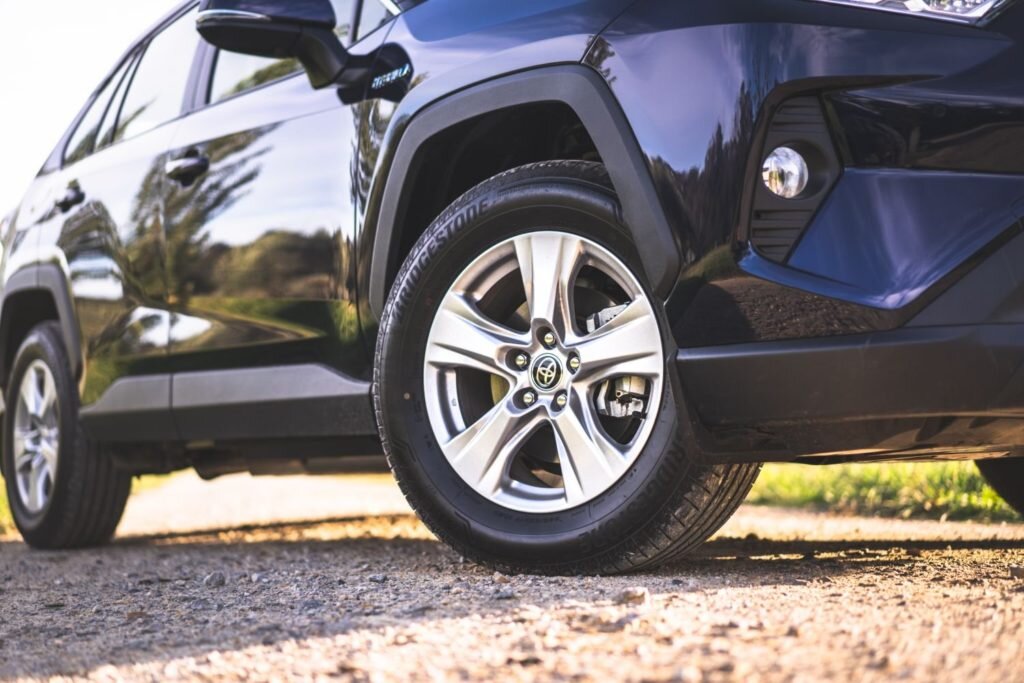Toyota RAV4 Hybrid review and buying guide: First Action Hero Returns
There's plenty to appreciate about the Toyota RAV4, especially if you're looking for an all-rounder, midsize five-seat SUV.
Images: Matthew Hayman, Haberdash Photography
The Toyota RAV4, is not perfect, but there’s plenty of good to sort from the bad in order to help you make the informed choice.
RAV4 is competing against the Hyundai Tuscon, Mazda CX-5, Kia Sportage, Subaru Forester and Mitsubishi Outlander for your interest. And you don’t have time to drive all six, right? Nobody does.
This is the fifth generation RAV4 and compared with the first one, which at just 4.6m long is measurably better to use daily than the previous version which wasted a lot of space being swoopy and stylish. If size and parking are a serious issue for you, you might want to disregard the RAV4 at this point and consider the benefits of a normal sedan.
RAV4 emerged in the mid-90s telling the world a family car with extra ride height and all-wheel drive was a much better way to go camping than in dad’s old rear-drive Falcon getting bogged and bottoming out. It can still do this, only on a much higher level of competence.
What’s impressive with this RAV is that it’s shorter than the previous version but has a longer wheelbase, which means more cabin space and reduced front/rear overhangs, so it drives better - and still has a good turning circle. Thanks to 15mm extra ride height over the old RAV, it’s now less likely to scuff itself on kerbs, rocks and sticks etc. Just don’t go taking it for hardcore off-roading. That’s a very, very bad idea.
Now, I don’t usually bother talking about fuel economy when I review cars, mostly because it’s irrelevant to most actual buyers. Why? Figures quoted by carmakers are pointless (they’re barely a rough ‘guide’ at best), and fuel in Australia is pretty cheap overall. Also, people don’t really drive with the mission to preserve fuel. Quite the opposite, I’d argue. Most consumers should also stop buying a big, heavy SUV if fuel economy is their aim.
Plus, the difference one car’s economy has over another is so marginal, it’s not worth bothering you with because you’ll never be able to see a tangible saving either in your bank account or at the servo. So move on, live free.
But, the RAV4 Hybrid is an exception. Not because it’s extremely economical in the engine department, but it does make its electric drivetrain a priority in terms of how frequently it’s used during driving, particularly during acceleration from stationary. And that does actually count towards fuel saving.
Toyota’s combined claimed fuel economy figure, based on lab bench testing, is 4.8L per 100km. That’s roughly half of normal petrol midsize SUVs like Hyundai Tuscon/Kia Sportage Subaru Forester or Mitsubishi Outlander for example.
The electric motor and battery kick in most significantly at acceleration from a stand still, which is where physics dictates an engine uses the most amount of fuel – to get your two-tonne lump of metal going. Toyota uses the hybrid system very effectively in this period before switching it back to the ol’ fuel burner.
People say Tesla has made electric cars a household topic. But I’d argue Toyota has made the technology ordinary (in the best possible way), by making it understated, seamless and convenient. I don’t want to say mundane, because that gives a negative connotation.
Mums and dads out there, the majority I would argue, don’t give two hoots about the latest hybrid tech. At least not at nerdy level. ‘As long as it works and drives okay, and hey, if it saves a bit on fuel, cool.’ Am I right?
The funny part is that they’ve had to make all the battery and electric motor stuff fit inside a car that’s shorter than the old one, they’ve reduced the fuel tank size, so yes you’ll use less fuel than the conventional RAV, but you’ll hardly know because the tank will empty just as soon.
But credit where it’s due, Toyota has made a very noticeably effective, efficient hybrid SUV. Which is why demand has been so high.
ENGINES AND DRIVETRAINS
You have two engine options and that determines whether you get front-wheel drive only or all-wheel drive.
If you specifically want all wheel drive, as opposed to need because you live in difficult terrain or occasionally adverse conditions like in regional Australia, then you’ll only be able to pick the hybrid.
Or there’s the 2.0L “Dynamic Force” petrol engine with 6-speed manual or auto CVT.
So there’s the 2.5L petrol hybrid system with auto CVT and AWD. Or there’s the very ordinary, uneventful, naturally aspirated 2.0 litre. Again, if you test drive the petrol-only RAV, you’ll understand why demand for the hybrid has been so high and waiting lists were out to six months initially. Supply has since caught up, thankfully.
Of course, you do pay for that excellent hybrid AWD configuration: $35,000 driveway for the base model (exact figure may vary state to state). But the good news is you don’t have to hand over another wad of your cash to decide between the petrol-only or the clever-hybrid.
Honestly, if you’re shopping right now and can’t wait for the hybrid, don’t bust your nut over it, the petrol will be okay. Just don’t expect it to spice up your life. I mean, it’s just a car anyway.
SPACE INVASION
RAV4 has a seriously big boot hole, almost as gaping wide and definitely as deep as the Subaru Forester.
You’ve got a maximum 580 litres of boot space back there and a really wide aperture, also similar to the Forester. This is great for loading cumbersome items like bikes with less risk of scuffing the interior trims or exterior sills. Geez I hate it when that happens.
Whereas the Kia Sportage and Hyundai Tuscon have 466L and 488L respectively, Mazda CX-5 can only offer 442L, while the Mitsubishi Outlander has a ‘not bad’ boot space at 477L (third row down), and Subaru Forester, with its ultrawide boot aperture, has the second best of this bunch with 498L. But they’re still not as much as the RAV.
If you have a bigger family, say of two or more kids, I would advise to take a test drive of a hybrid RAV4 and actually take your pram, especially if it’s a big dual-kid type. In fact, ask the dealer to have it for the weekend and try to see how your mob all fits in it.
This could be a much more affordable option than going for an expensive seven seater like Kia Sorento, Mazda CX-9 or Kluger. Don’t buy something that’s bigger and more costly to run if you don’t strictly need to.
RAV4’s boot will be adequate for 90 per cent of what you ask it to do.
But there’s a serious problem with the rear doors.
You know, the ones you’re constantly trying to load kicking toddlers and their 400 different thermo-insulated food bags and backpacks and the dribbling dog with its claws still in need of clipping, and the pavlova base and the Kathmandu jackets, and your work bag, plus the eski…
Problem is the back doors open at such a stupidly narrow angle they don’t get adequately out of the bloody way to load things.
By comparison, Mazda CX-5 rear doors open at a wonderful 90 degrees to the car. RAV4’s, I reckon, without actually measuring, open to about 60 or 70 degrees. To be fair, this does reduce the likelihood of them hitting cars parked beside you, but not enough that it totally mitigates that.
This may not bother you, but try it for yourself and see if it’s going to bug the hell out of you every single day for as long as you own it.
FINAL DESTINATION
Toyota RAV4 GXL Hybrid loaned for one week courtesy of Toyota Australia.
There’s a great deal of practical and versatile use you can get out if the current RAV4.
I respect Toyota for making its hybrid technology, not only affordable, but perceivably effective at reducing emissions and fuel consumption somewhat.
It’s not perfect, and those silly doors are too annoying for me to tolerate for years to come, but everything in life is about compromise and it’s probably a small one for you to make to get such an enormous boot that will mean you don’t have to buy more car than you need.
The petrol-only 2WD-only configuration is also a bit limiting to those in the country who probably won’t receive the full benefits of hybrid integration in long distance driving, but whom could certainly use AWD in tricky conditions.
The RAV4 interior is very kid friendly, which means plenty of cleanable, hard plastics (something many motoring journos neglect to mention). As someone who has a kid and cleans up after theirs, easy-clean surfaces are good. Banana infused leather is a bastard to clean.
Overall, I’d say the RAV4 won’t disappoint. It just won’t light your pants on fire.
But for many, that’s a good thing.
Need to know even more about the RAV4 or especially the hybrid - or any other hybrids for that matter? Flick me an email; let’s talk.







